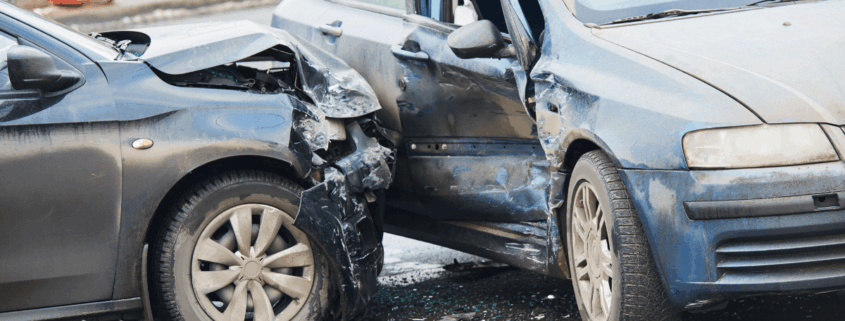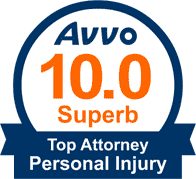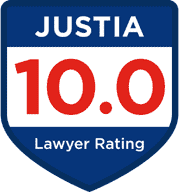
Orland Park Autonomous Vehicle Accident Lawyers
The introduction of autonomous vehicles (AVs), often called self-driving cars, promises a future of safer and more efficient transportation. Yet, as these vehicles begin to share the roads in Orland Park and across Illinois, they also introduce a new and complex category of accidents. A collision involving a self-driving car is not just another car accident; it’s a legal challenge that can involve groundbreaking technology, complex liability issues, and a web of state and federal regulations.
When you or a loved one is injured in an accident involving an autonomous vehicle, the legal path forward is far from straightforward. Traditional accident claims focus on human error, but in a world of automated systems, the question shifts from “who was driving?” to “what was the car’s system doing?”
What is an Autonomous Vehicle?
An autonomous vehicle is a car that can sense its environment and operate without human input. The Society of Automotive Engineers (SAE) International has established six levels of driving automation, from Level 0 (no automation) to Level 5 (full automation).
- Level 0 (No Automation): The human driver is in full control of all vehicle functions.
- Level 1 (Driver Assistance): The vehicle has a single automated system, such as adaptive cruise control or lane-keeping assist. The human driver must be ready to take over at any time.
- Level 2 (Partial Automation): The vehicle can control both steering and acceleration/deceleration, but the driver must remain engaged and monitor the environment. Many modern cars with advanced safety features fall into this category.
- Level 3 (Conditional Automation): The vehicle can perform all driving tasks under certain conditions, but the human driver must be available to take over when prompted.
- Level 4 (High Automation): The vehicle can perform all driving tasks and monitor the environment in specific, limited areas. It can handle most scenarios without human intervention, but the driver can take control if they choose.
- Level 5 (Full Automation): The vehicle can operate completely on its own under all conditions, without any human input. The car will not have a steering wheel or pedals.
In Orland Park, you are most likely to encounter vehicles at Levels 1 and 2, but with rapid technological advancements, higher-level automation is on the horizon. The liability in an accident changes drastically depending on the level of autonomy the vehicle was operating at.
Why Are Autonomous Vehicle Accidents So Complex?
The emergence of autonomous vehicle (AV) technology—ranging from Level 2 driver assistance systems to fully self-driving prototypes—presents a fundamental shift in road safety and liability. When an autonomous vehicle crash occurs in Orland Park, the resulting legal claim departs sharply from a typical two-car collision. The sheer number of variables in an AV accident sets these cases apart, transforming a simple traffic investigation into a complex technical and legal undertaking.
In a traditional collision, the investigation centers on the actions of the two human drivers. With an autonomous vehicle, the investigation must delve into a variety of complex factors, often requiring specialized knowledge to untangle the overlapping responsibilities of technology, human oversight, and manufacturing integrity.
The Multi-Layered Challenge of AV Accidents
The defining characteristic of an autonomous vehicle accident is the complexity of identifying the cause and apportioning fault. This complexity stems from the collision of established traffic law with rapidly evolving computer science.
Multiple Parties
The number of potentially liable parties can be extensive, creating a web of corporate responsibility that requires careful disentanglement. Unlike a crash where liability rests solely with the human driver, an AV accident may involve:
- The AV Operator (Human): Even in vehicles with high levels of autonomy (Levels 3 and below), a human driver is often required to monitor the environment and be ready to take control. Their negligence in failing to intervene can be a primary cause.
- The Vehicle Manufacturer: The company that assembled the vehicle and integrated the autonomous systems holds responsibility for the vehicle’s structural and electronic integrity.
- The Software Developer: This entity is responsible for the artificial intelligence (AI), machine learning algorithms, and code that serve as the “brain” of the vehicle. If the software makes a flawed decision (e.g., miscalculating stopping distance or misidentifying an object), the software developer may bear responsibility.
- The Sensor Manufacturer: The hardware suppliers responsible for the vehicle’s “eyes” and “ears”—LiDAR, radar, cameras, and ultrasonic sensors. A defect in one of these components, causing it to fail or transmit inaccurate data, can render the entire system blind.
- Other Component Suppliers: Parties responsible for critical subsystems, such as the steering mechanism, braking system interface, or proprietary mapping data, may also be included in a thorough claim.
Data Analysis and Preservation
The key to proving fault in an AV case often lies not in eyewitness accounts but in the vehicle’s proprietary data. The vehicle itself is the primary witness, recording everything it perceives and does.
- The Digital Black Box: All AVs contain sophisticated Event Data Recorders (EDRs) and log files that constantly capture sensor output, throttle and braking input, steering angle, and, most critically, the autonomous system’s state (engaged, disengaged, or requesting human takeover).
- Accessing Proprietary Data: Accessing, preserving, and analyzing this complex, proprietary data requires specialized knowledge. Vehicle manufacturers are often reluctant to release the full dataset, citing trade secrets. Securing this evidence quickly before it is overwritten or lost is a significant legal challenge, often requiring court orders and the immediate retention of forensic analysts.
- Reconstruction: Unlike traditional reconstruction based on skid marks and impact deformation, AV accident reconstruction relies on correlating sensor data with real-world events, minute-by-minute, to determine exactly why the vehicle acted (or failed to act) as it did.
Evolving Legal Framework and Precedent
The legal framework surrounding autonomous vehicles is still developing. State and federal laws are playing catch-up with the rapid technological advancements. This means there are often no clear legal precedents for these types of cases, forcing claims to rely heavily on applying established principles of product liability and negligence to non-human actors.
What Causes Autonomous Vehicle Accidents in Orland Park?
The causes of AV accidents are a mix of technological and human factors, often merging to create a single, complex liability case.
Technology Malfunctions: The Brain and Eyes of the Vehicle
The technology that powers autonomous vehicles is sophisticated but not infallible. Any part of the system can malfunction, leading to a breakdown in decision-making.
- Sensor Failures and Environmental Interference: The vehicle’s sensors—LiDAR, radar, and cameras—are its “eyes.” If they fail or are obstructed, the vehicle cannot correctly perceive its surroundings. Common interferences include heavy Orland Park snow, road salt spray, accumulated dirt or debris, or even sun glare and magnetic interference near high-power lines. A malfunction here results in “perception failure.”
- Software Errors and Algorithm Misinterpretation: The software is the “brain” of the vehicle. A coding error, a bug in the programming, or an issue with the algorithms that process sensor data can cause the car to make an incorrect or unsafe decision. For example, the AI might misclassify a stopped delivery truck as an overhead sign or confuse a cyclist for a pedestrian, leading to a catastrophic avoidance failure or incorrect braking. This falls under design negligence.
- System Overrides and Hand-off Failures: In lower levels of autonomy (Level 3), the vehicle monitors the environment but may encounter a situation it cannot handle (a “system limit”). It then requests the human driver to take control. If the system fails to properly provide enough time for the driver to re-engage, or if the driver is impaired or distracted and fails to respond, the software’s hand-off design itself can be held negligent.
- Cybersecurity Breaches: While less common, the remote possibility of a cyberattack or hacking of a vehicle’s critical operating systems could lead to a loss of control, introducing criminal or third-party liability into the civil claim.
Human Driver Negligence: The Necessary Backstop
Even with a self-driving car, human interaction remains a primary factor, particularly in semi-autonomous vehicles.
- Failure to Take Over (Inattention): In Illinois, if a vehicle requires an attentive human backup (Level 3), the driver has a duty to monitor the system. A driver who is distracted, sleeping, or impaired and fails to take control when the system requests it—or when an obvious danger arises—can be held liable for their negligence.
- Improper Use of the System: A driver who uses the AV’s features in conditions for which they were not designed (e.g., relying on the freeway-optimized autopilot on poorly marked local Orland Park streets or during heavy construction) could be found negligent for system misapplication.
- Negligent Driving in Manual Mode: When a self-driving car is operated in manual mode, the human driver’s negligence, such as speeding, distracted driving, or impaired driving, is the cause, and the case proceeds as a traditional personal injury claim.
Navigating the Legal Landscape in Illinois
The legal claim process for AV accidents requires precise application of Illinois tort law to technological failures.
Modified Comparative Negligence
In Illinois, the modified comparative negligence rule applies, stating that an injured party can recover damages only if they are found to be less than 50% responsible for the accident. However, assigning a percentage of fault to a vehicle’s software, a sensor defect, or a manufacturer’s design flaw—rather than a human driver—is a complex undertaking.
The team pursuing compensation must argue:
- Driver Negligence (Traditional Tort): If a human driver was negligent in their duties (e.g., failure to monitor, speeding in manual mode).
- Product Liability (Technical Fault): If the vehicle was defective. Claims against manufacturers typically fall under three categories of product liability:
- Defective Design: The design of the software or hardware was inherently dangerous, making the vehicle prone to failure (e.g., the algorithm cannot correctly handle left-hand turns).
- Defective Manufacturing: A component was improperly built, causing it to fail prematurely (e.g., a critical weld or a faulty sensor chip).
- Failure to Warn: The manufacturer failed to adequately warn the human driver of the system’s limitations or the specific conditions under which the autonomous features should not be used.
Joint and Several Liability
The large number of potential defendants—from the manufacturer to the software developer—makes Illinois’s joint and several liability rule critical for the victim. If a defendant (like the manufacturer) is found to be 25% or more at fault, they may be held responsible for the victim’s entire economic and non-economic damage award. This protection ensures that the injured party can recover full compensation even if a smaller, potentially under-insured component supplier is also found partially liable.
The Investigative Mandate
Successfully pursuing a claim following an AV crash hinges on a swift and thorough investigation aimed at securing the digital evidence. The legal office representing the victim must act immediately to:
- Secure the Vehicle and Data: Issuing a preservation letter to the vehicle owner and manufacturer is critical to prevent the destruction, deletion, or overwriting of the vehicle’s log files and EDR data.
- Consult Technical Experts: The claim requires testimony from professionals, such as forensic engineers and computer scientists, who can interpret the proprietary data, reconstruct the system’s decision tree, and pinpoint the exact moment and reason for the technological failure.
- Analyze Regulatory Compliance: The investigation must look at compliance with industry safety standards and any relevant federal safety mandates issued by the National Highway Traffic Safety Administration (NHTSA). Violations in testing, design, or safety protocols provide compelling evidence of corporate negligence.
The decision to secure legal representation is often the only way a victim can access and interpret the deeply technical evidence required to prove fault against the powerful corporations responsible for autonomous technology.
Who is Responsible for an Autonomous Vehicle Accident?
Determining who is at fault is the most challenging aspect of these claims. Unlike a traditional accident where fault is often assigned to a single driver, a multi-vehicle accident with an autonomous car could involve several parties.
The Vehicle’s Manufacturer
If a flaw in the vehicle’s design or a defect in its autonomous system caused the accident, the manufacturer could be held liable under product liability law. This could include defects in:
- Hardware: Such as a malfunctioning sensor, a defective braking system, or a faulty computer.
- Software: A programming error or an algorithm that made a poor decision.
- Design: The overall design of the autonomous system was inherently unsafe.
The Component Manufacturer
The technology in a self-driving car is rarely made by a single company. The sensors, cameras, and software may all be produced by different companies. If a specific component failed, the manufacturer of that part could be held liable.
The Vehicle Operator
The human driver of the vehicle may be liable in certain scenarios.
- Failure to Supervise: In cases involving Level 2 or 3 vehicles, where the human driver is expected to be attentive and take over when needed, a failure to do so could result in liability.
- Driver Error: If the vehicle was in manual mode and the driver was negligent, they can be held responsible.
- Improper Maintenance: The owner of the vehicle may be liable if they failed to maintain the vehicle and this negligence contributed to the accident.
The Owner of the Vehicle
Even if the owner was not the one operating the vehicle, they may still bear some responsibility. For instance, if the owner was aware of a safety recall and did not have it fixed, they might be held liable.
Other Drivers
Another driver’s negligence can still be the primary cause of the accident, even if an autonomous vehicle is involved. For example, a distracted driver hitting a self-driving car from behind.
What Kind of Injuries Are Common in Autonomous Vehicle Accidents?
Due to the nature of collisions, autonomous vehicle accidents can result in devastating and life-altering injuries, similar to those sustained in other major car accidents. The injuries victims that endure often require extensive medical care, rehabilitation, and long-term support.
- Traumatic Brain Injuries (TBI): The sudden impact can cause the brain to violently strike the inside of the skull. This can result in concussions or more severe TBI that leads to permanent cognitive, motor, or behavioral impairments.
- Spinal Cord Injuries (SCI): The force of a collision can damage the spinal cord, leading to partial or complete paralysis (paraplegia or quadriplegia). These injuries have a significant impact on a person’s life, requiring ongoing medical care and assistance.
- Bone Fractures: Complex or multiple bone fractures are common in these accidents, often requiring surgery, physical therapy, and a long recovery period. Crush injuries are also a significant concern.
- Internal Injuries: Blunt force trauma can cause internal organ damage and bleeding, which may not be immediately obvious.
- Wrongful Death: Tragically, the severity of these accidents can lead to fatalities. In such cases, families may pursue a wrongful death claim to seek justice and compensation for their loss.
What Compensation Can You Seek?
If you have been injured in an autonomous vehicle accident, you may be entitled to recover compensation for a wide range of damages.
Economic Damages
These are the quantifiable financial losses you have incurred or will incur as a direct result of your injuries.
- Medical Expenses: This includes emergency room care, hospital stays, surgeries, doctor visits, prescription medications, medical equipment, and future medical treatment.
- Lost Wages and Earning Capacity: Compensation for income you have already lost due to time away from work, as well as for the future inability to earn income if your injuries are permanent.
- Property Damage: The cost to repair or replace your vehicle and any other personal property damaged in the accident.
- Rehabilitation Costs: This covers physical therapy, occupational therapy, and other services needed to help you recover.
Non-Economic Damages
These damages are designed to compensate you for the subjective, non-monetary harms you have suffered.
- Pain and Suffering: Compensation for the physical pain, discomfort, and emotional distress caused by your injuries.
- Loss of Enjoyment of Life: The loss of the ability to participate in hobbies, activities, and aspects of life you once enjoyed.
- Emotional Distress: Addresses the psychological impact of the accident, including anxiety, depression, fear, or Post-Traumatic Stress Disorder (PTSD).
- Disfigurement and Scarring: Compensation for the physical changes and the emotional toll of permanent scars or disfigurement.
Punitive Damages
In rare cases, if the defendant’s conduct was particularly egregious, such as willful and wanton misconduct or gross negligence, a court may award punitive damages. These damages are not meant to compensate the victim but rather to punish the wrongdoer and deter similar conduct in the future.
The Importance of a Thorough Investigation
Because of the technological factors involved, a comprehensive investigation is absolutely vital in an autonomous vehicle accident claim. A legal team will need to take several steps to build a strong case.
- Securing the Vehicle Data: The “black box” data from the autonomous vehicle is the most important piece of evidence. This data can show the car’s speed, braking, steering, and what its sensors were detecting in the moments leading up to the crash.
- Working with Experts: A skilled attorney will work with accident reconstruction experts, engineers, and computer scientists to analyze the vehicle’s data and determine if a technological failure caused the accident.
- Gathering Traditional Evidence: Just like in any other car crash, an attorney will also collect traditional evidence, such as police reports, witness statements, and any surveillance video from the scene.
- Examining the Driver and Company Records: If a human driver was involved, their driving record, training, and logbooks will be reviewed. If a company is a potentially liable party, their maintenance records and safety protocols will be scrutinized.
How to Protect Your Rights After an Autonomous Vehicle Accident
The moments following an accident are often confusing and chaotic, but the steps you take can have a significant impact on your legal claim.
- Prioritize Medical Care: Your health is the most important thing. Seek immediate medical attention, even if you feel fine. Some serious injuries may not show symptoms right away.
- Contact the Police: An official police report can provide an objective account of the accident and may contain vital information about all involved vehicles.
- Document the Scene: If you are physically able, take photos and videos of the entire scene, including the vehicles’ positions, any damage, skid marks, road conditions, and any potential hazards.
- Gather Information: Collect contact information, driver’s license numbers, and insurance details from all involved parties. Get the contact information for any witnesses.
- Do Not Admit Fault: Avoid making any statements that could be interpreted as an admission of fault. Be factual with the police and do not speculate on the cause of the crash.
- Do Not Speak to Insurance Adjusters: You will likely be contacted by multiple insurance companies. Politely decline to provide a recorded statement and inform them that your attorney will be in touch.
- Contact an Attorney Immediately: Time is of the essence. A knowledgeable attorney can ensure that all evidence, especially the critical vehicle data, is preserved and that all legal deadlines are met.
Contact Our Orland Park Autonomous Vehicle Accident Attorneys
An accident involving a self-driving car is a novel and complex legal challenge. These are not cases to be handled without qualified legal representation. With multiple parties, a maze of technical data, and evolving laws, you need an attorney who is prepared to tackle the unique nature of these claims. The Fotopoulos Law team is here to help. We are dedicated to holding negligent parties accountable and fighting for the compensation you need to cover medical expenses, lost wages, and your pain and suffering. Let us handle the legal complexities so you can focus on what matters most: your recovery.
Call us today at 708-942-8400 or fill out our online contact form to schedule your free, no-obligation consultation. We are ready to review the details of your case and provide the answers you need to move forward.






